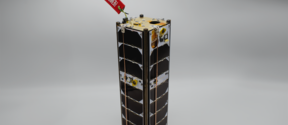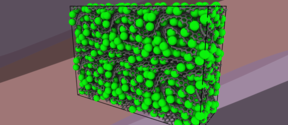Bodily sensations give rise to conscious feelings

Humans constantly experience an ever-changing stream of subjective feelings that is only interrupted during sleep and deep unconsciousness. Finnish researchers show how the subjective feelings map into five major categories: positive emotions, negative emotions, cognitive functions, somatic states, and illnesses. All these feelings were imbued with strong bodily sensations.
‘These results show that conscious feelings stem from bodily feedback. Although consciousness emerges due to brain function and we experience our consciousness to be "housed" in the brain, bodily feedback contributes significantly to a wide variety of subjective feelings,’ explains Associate Professor Lauri Nummenmaa from Turku PET Centre.
According to the researchers, emotions vividly colour all our feelings as pleasant or unpleasant. It is possible that during evolution, consciousness has originally emerged to inform the organisms and others around about tissue damage and well-being. This development may have paved for the emergence of language, thinking and reasoning.
‘Subjective well-being is an important determinant of our prosperity, and pain and negative emotions are intimately linked with multiple somatic and psychological illnesses. Our findings help to understand how illnesses and bodily states in general influence our subjective well-being. Importantly, they also demonstrate the strong embodiment of cognitive and emotional states,’ adds Nummenmaa.
‘Having the map of conscious mental and bodily states will help us better characterise participants in our brain imaging studies. They go through a variety of experiences watching naturalistic videos or simply resting in the scanner while we measure their brain activity. By quantifying an individual’s bodily and mental load we can better discern similarities and differences between people and interpret our imaging results more precisely,’ says Enrico Glerean, co-author and postdoctoral researcher at Aalto University.
The study was conducted in the form of an online questionnaire in which more than 1,000 people participated. The participants first evaluated a total of 100 feeling states in terms of how much they are experienced in the body and mind, and how emotional and controllable they are. Next, they also evaluated how similar the feelings are with respect to each other, and whereabouts in the body they are felt.
‘We have obtained solid evidence that shows the body is involved in all types of cognitive and emotional functions. In other words, the human mind is strongly embodied,’ says Riitta Hari, co-author and Academician of Science at the Aalto University Department of Art.
The research was funded by the European Research Council (ERC) and the Academy of Finland.
The results were published 29 August 2018 by the National Academy of Sciences in its journal Proceedings of The National Academy of Sciences of The United States of America (PNAS).
Link to the paper: https://doi.org/10.1073/pnas.1807390115
Figures: Map of subjective feelings and bodily maps of feelings.
More information:
Lauri Nummenmaa
Associate Professor, Turku PET Centre, University of Turku
p. +358 50 574 7933
lauri.nummenmaa@utu.fi
Enrico Glerean
Postdoctoral Researcher, Aalto University
enrico.glerean@aalto.fi
Riitta Hari
Academician of Science, Aalto University
riitta.hari@aalto.fi
Related:
Previous research - Finnish research team reveals how emotions are mapped in the body
Read more news

Finland’s Foresail-1p science satellite successfully launched into space
The Finnish science satellite Foresail-1p was successfully launched into space after 8 PM Finnish time on Friday 28 November 2025, aboard the Transporter-15 mission from Vandenberg Space Force Base, California.
A paradigm shift: machine learning is transforming research at the atomic scale
Assistant professor Miguel Caro and his research group use and develop machine learning tools to accelerate discoveries from simulation to experiment
Applications for our biggest exhibition of the year are now open: Apply to Designs for a Cooler Planet by 26.1.2026!
For the autumn 2026 exhibition, we are looking for new and inspiring innovations, ideas, and experiments from all fields across Aalto University. The exhibition and its events serve as one of the most important showcases of the university’s work to the world. In 2025, the event attracted over 15,000 visitors.






